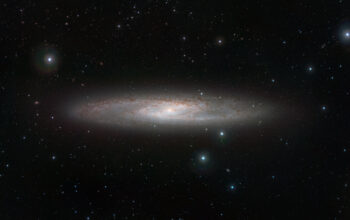The realm of particle physics is characterized by its monumental experiments and groundbreaking discoveries. Among the most prominent institutions in this field are CERN (the European Organization for Nuclear Research) and Fermilab (the Fermi National Accelerator Laboratory), both of which have established themselves as leaders in the pursuit of understanding the fundamental components of the universe. The rivalry between these two esteemed institutions is not merely a matter of institutional pride; it embodies the spirit of scientific competition that drives innovation and discovery. This discourse seeks to unravel the complexities of their competition regarding the pursuit of fundamental particles, specifically the Higgs boson, amongst other significant findings, thereby addressing the intriguing question: Who found it first?
At the crux of the enigmatic competition between CERN and Fermilab lies the quest for the elusive Higgs boson, a particle that came to prominence with the theoretical framework posited by physicist Peter Higgs and his contemporaries in the 1960s. The Higgs boson is central to the Standard Model of particle physics, as it is responsible for imparting mass to other particles via the Higgs field, a pervasive field that fills the void of space. Until its eventual discovery, the Higgs boson remained a tantalizing concept—thought to exist but never empirically validated.
CERN’s Large Hadron Collider (LHC) has often been heralded as the world’s premier particle accelerator. Upon its inception in 2008, it was constructed with the explicit purpose of investigating phenomena that could explain the fabric of mass and energy in the universe. In 2012, CERN announced the remarkable discovery of a particle consistent with the Higgs boson, based on data collected from proton collisions at unprecedented energy scales. This discovery sent ripples through the scientific community, heralding a new era in particle physics and securing CERN’s status as a forerunner in the field.
Conversely, Fermilab, with its long-standing legacy in particle physics and a storied history of major discoveries—such as the bottom quark and the top quark—has also been a formidable contender. Prior to the findings at the LHC, Fermilab’s Tevatron collider played a pivotal role in probing the electroweak sector, setting the stage for the eventual validation of the Higgs mechanism. Notably, Fermilab scientists had been accumulating evidence of a Higgs-like particle before CERN’s 2012 announcement, with significant findings emerging during the 2000s that pointed to the particle’s existence. However, the crucial distinction lay in the energy levels achievable at Fermilab compared to those at CERN.
The discourse surrounding “who found it first” often overlooks the collaborative nature of scientific exploration. The intricate tapestry of breakthroughs in this domain cannot be attributed solely to one entity. While CERN achieved the definitive confirmation of the Higgs boson, it is important to recognize the contributions of the global scientific community, including Fermilab, in advancing theoretical underpinnings and conducting preliminary experiments that paved the way for such a discovery.
Moreover, the competition between CERN and Fermilab is emblematic of a broader trend within the scientific community. It serves as a vivid illustration of how rivalry can catalyze unprecedented advancements. The pursuit of knowledge is seldom linear; rather, it encapsulates a series of iterative processes, where institutions push each other to reach greater heights. This intellectual contestation not only accelerates the pace of discovery but also enriches the dialogue within the physics community, fostering an environment where new theories are rigorously tested and refined.
In the wake of the Higgs boson discovery, CERN has further solidified its dominance in high-energy physics. Yet, Fermilab has embarked on a new and ambitious initiative—the Long-Baseline Neutrino Facility (LBNF) and the Deep Underground Neutrino Experiment (DUNE). This facility represents the next chapter in Fermilab’s illustrious history, aiming to probe the mysteries of neutrinos—particles that are notoriously elusive yet potentially pivotal in elucidating the asymmetries of matter and antimatter in the universe. As Fermilab continues to advance its research, it exemplifies the enduring nature of scientific inquiry, where new frontiers beckon regardless of previous accolades.
Additionally, the collaborative landscape of modern physics necessitates contemplation on the ethical dimensions of discovery attribution. The advent of international collaborations, characterized by shared resources and collective intellect, makes it increasingly challenging to determine singular contributions. The intricate network of researchers and institutions engaged in pursuits that illuminate the cosmos serves as a reminder that knowledge, while often celebrated within the framework of competition, is fundamentally a collective human endeavor.
In conclusion, while CERN may have duly claimed the limelight with the formal identification of the Higgs boson, the narrative of discovery is far more nuanced than a mere race between titans. The dialogue between CERN and Fermilab, and the broader community, reflects a richer tapestry of scientific progress that thrives on competition, collaboration, and the relentless quest for knowledge. As both institutions continue to probe the depths of particle physics, the distinctions between achiever and pioneer blur, thereby illuminating the collective aspirations of humankind to fathom the cosmos. The saga of CERN and Fermilab is not merely about “who found it first,” but rather about how the quest for understanding reshapes our perception of the universe itself.










